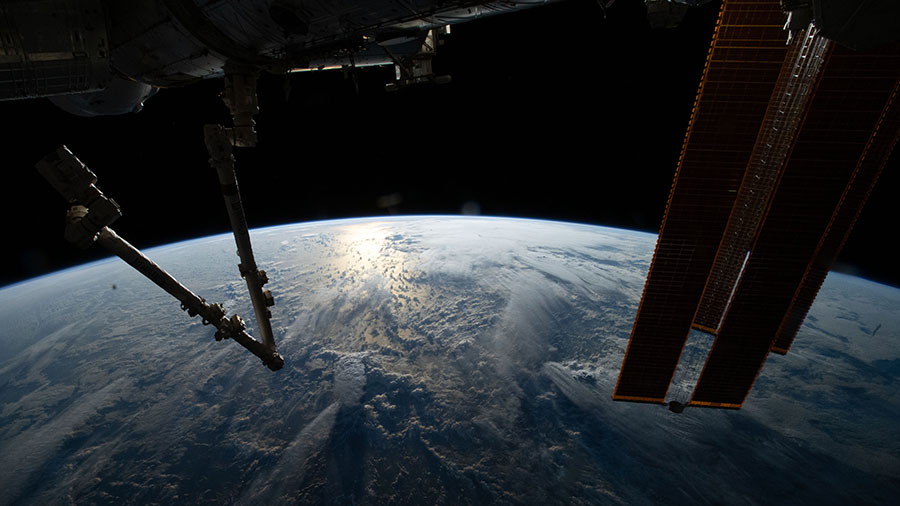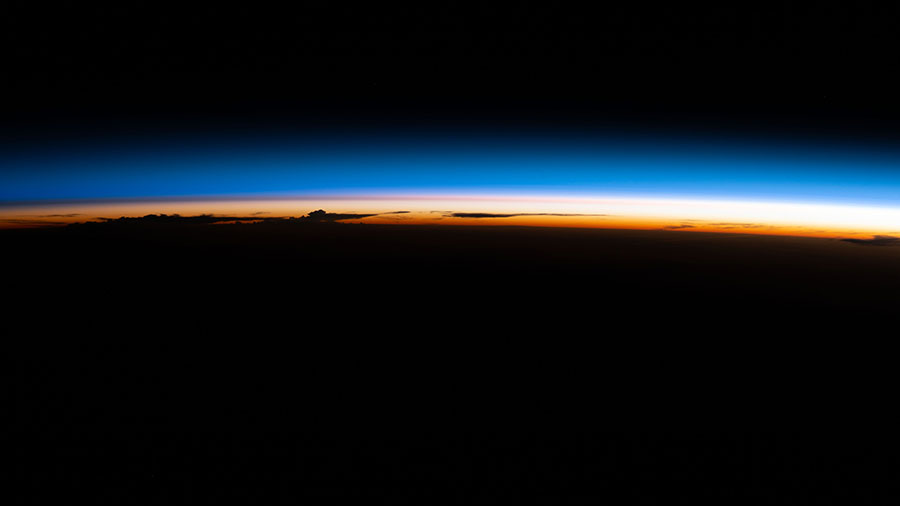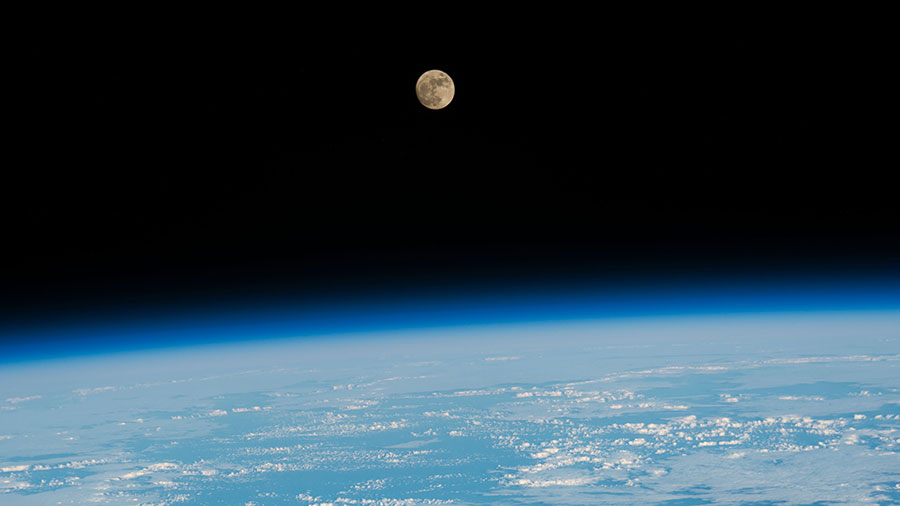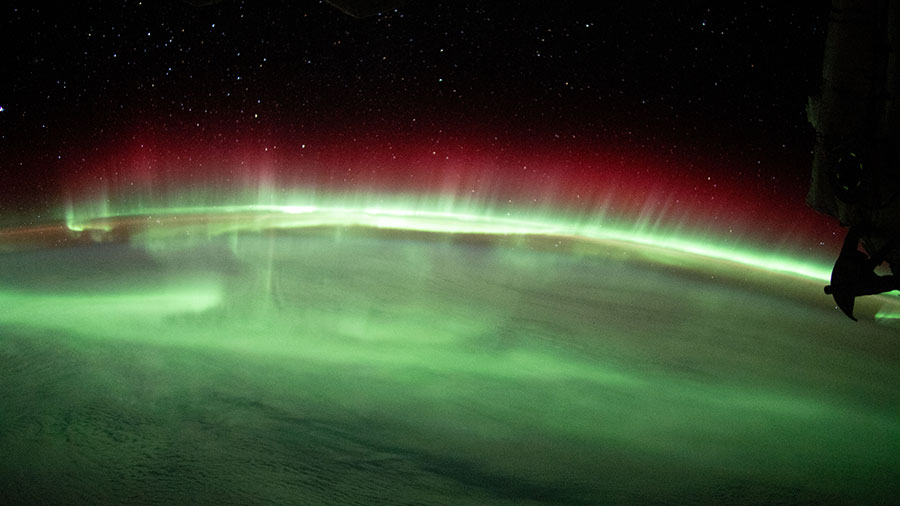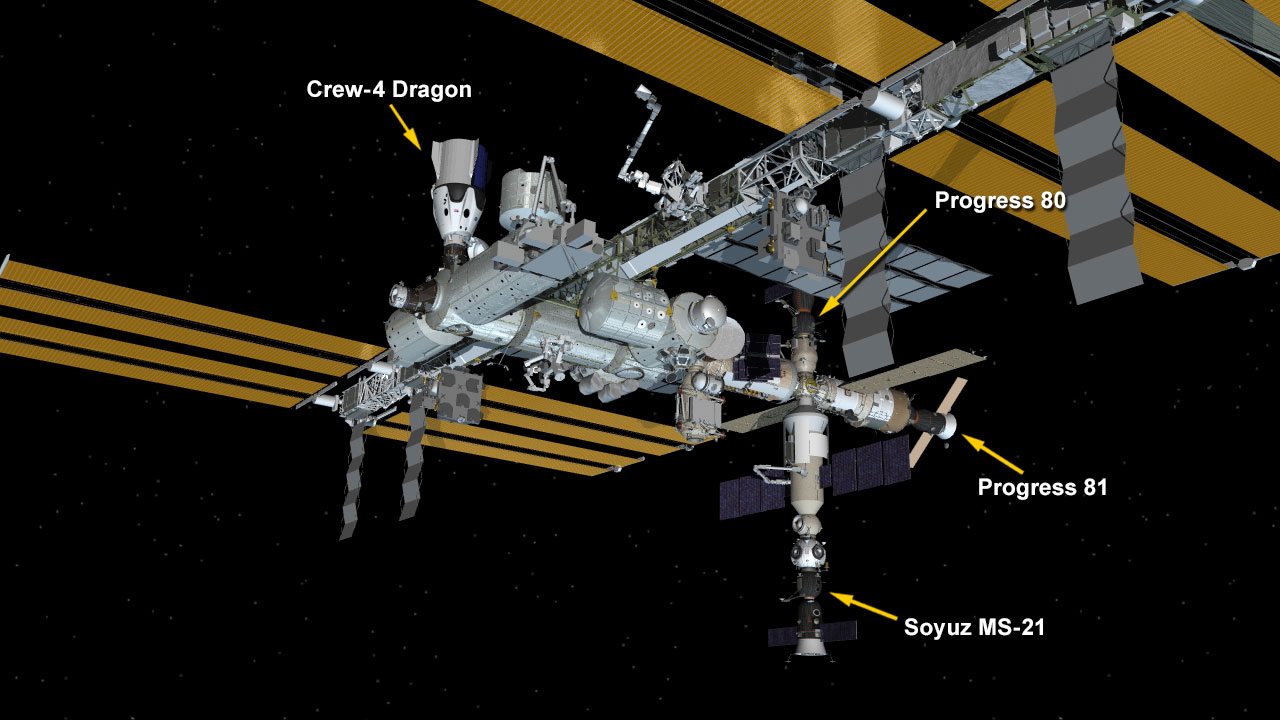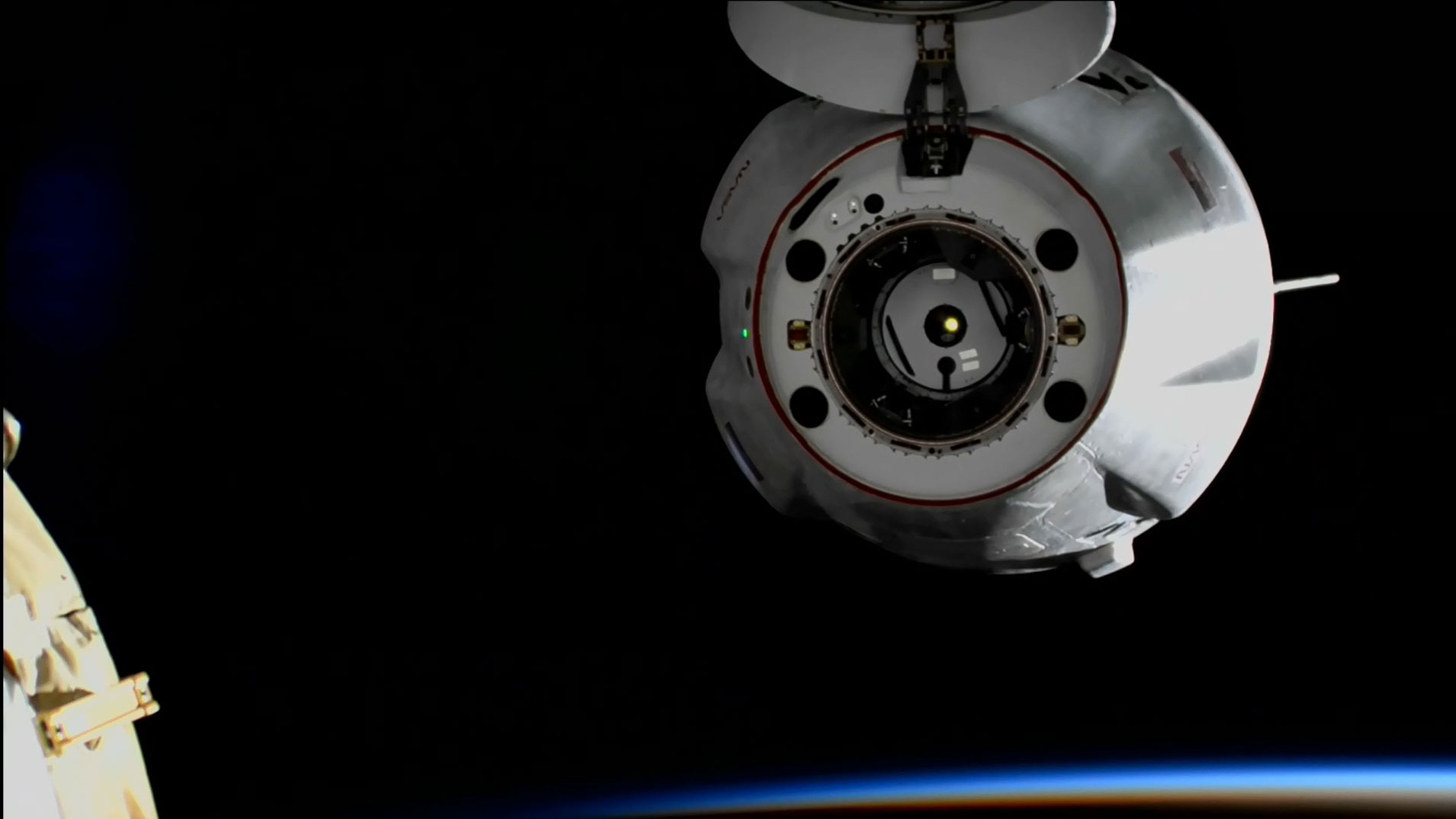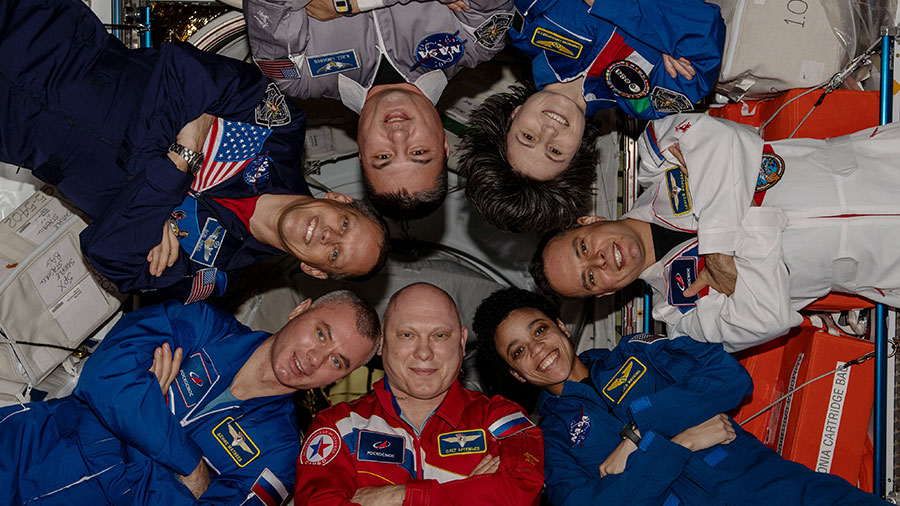
Vein scans and human research samples comprised the majority of the research schedule for the Expedition 67 crew members on Tuesday. Spacesuit work is also ongoing aboard the International Space Station as the cosmonauts prepare for a spacewalk.
Three astronauts took turns on Tuesday morning using the Ultrasound 2 device to scan each other’s neck, shoulder, and leg veins. NASA Flight Engineers Kjell Lindgren, Bob Hines, and Jessica Watkins started the day inside the Columbus laboratory module with researchers on the ground remotely guiding the biomedical study. The ultrasound scans produce an echo that bounces off human tissue converting it to a video signal that is downlinked to Earth in real-time for analysis. Scientists view the imagery to observe how microgravity affects crew health.
The crew members also regularly collect their own blood, saliva, and urine samples, stowing the specimens in science freezers for later analysis. Shortly after Lindgren woke up on Tuesday, he spun his blood samples in a centrifuge for the Phospho-aging study to understand space-caused accelerated bone loss and muscle atrophy. ESA (European Space Agency) Flight Engineer Samantha Cristoforetti collected her blood and urine samples during the afternoon for future examination. Earlier, she documented her meals for a nutrition study then swapped material samples inside the Electrostatic Levitation Furnace, a high-temperature research facility.
Cristoforetti and Watkins also spent time inside the U.S. Quest airlock servicing a U.S. spacesuit. The duo split their day on a variety of suit activities including swapping components and cleaning cooling loops. Hines spent his afternoon charging computer tablets and downloading security updates for the devices.
Commander Oleg Artemyev and Flight Engineer Denis Matveev spent the day activating and inspecting a pair of Orlan spacesuits, testing their communication systems, and performing leak checks. The two cosmonauts have been busy this week preparing for an upcoming spacewalk to prepare the European robotic arm for payload operations on the station’s Russian segment. Flight Engineer Sergey Korsakov worked throughout Tuesday maintaining electronics systems and life support hardware inside the orbiting lab’s Russian modules.
Learn more about station activities by following the space station blog, @space_station and @ISS_Research on Twitter, as well as the ISS Facebook and ISS Instagram accounts.
Get weekly video highlights at: http://jscfeatures.jsc.nasa.gov/videoupdate/
Get the latest from NASA delivered every week. Subscribe here: www.nasa.gov/subscribe

